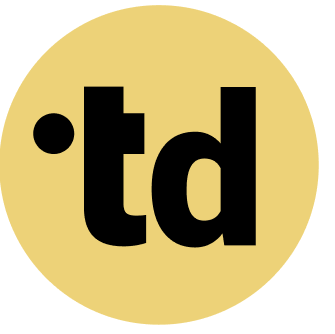Key Takeaways
Strategic workload planning is crucial for combating burnout, as nearly half of German employees report feeling its effects.
Defining clear roles can boost team efficiency by up to 53 percent and effectiveness by 27 percent.
Integrating AI into workflows is a key trend, with 70 percent of German companies expecting it to increase productivity.
In Germany, nearly half of all employees report feeling burned out, a silent pandemic costing the economy billions. The chaos of unclear roles and unbalanced workloads is a primary cause, with stress-related sick days increasing by 85 percent in just one year. This isn't just a wellness issue; it's a direct threat to productivity and innovation. The hero's journey for modern teams involves conquering this chaos. The solution lies in strategic workload planning and work allocation, transforming overloaded groups into high-performing, resilient units. By redesigning how work is distributed, teams can find their flow and achieve clarity, turning daily pressures into opportunities for growth.
Practical Framework for Team Architects
As a Team Architect, you can apply these principles to your organization:
- Map Current State: Document existing roles and responsibilities using a tool like teamdecoder.
- Identify Gaps: Where are roles unclear? Where do humans and AI agents overlap?
- Define Clear Boundaries: Specify which tasks are handled by humans vs. AI agents.
- Create Accountability: Assign clear decision rights for each role.
- Iterate and Improve: Continuously refine based on team feedback.
Confront the High Cost of Unclear Workloads
The modern workplace is a battlefield of priorities, where ambiguity is the enemy. In Germany, psychological stress led to 59 million lost workdays, a massive blow to the economy. When teams lack a clear system for workload planning, they don't just lose time; they lose momentum. Nearly employees cite increased stress from skill shortages, leading directly to burnout. This constant state of overload makes it impossible for teams to feel like *Teams Just Wanna Have Fun*.
This lack of structure is expensive, with many software projects failing due to poor resource allocation alone. The ripple effect impacts morale, as 48 percent of employees under 30 now report feeling burned out from the constant pressure. It's a cycle of inefficiency where great talent is wasted fighting fires instead of innovating. Addressing this chaos head-on is the first step toward building a more resilient and effective team structure.
Achieve Peak Performance With Role Clarity
Clarity is the superpower of high-performing teams. When roles are clearly defined, teams become up to more efficient and a significant portion more effective in their execution. This isn't a minor tweak; it's a fundamental shift in operational power. A marketing agency that sharpened its role definitions successfully reduced its project timelines by a remarkable a significant portion. Despite these gains, only 60 percent of employees currently feel they truly know what is expected of them at work.
Effective work allocation begins with this foundation of clarity. It eliminates wasted effort and empowers individuals to take ownership. Here are the immediate benefits:
- Reduces task duplication and overlap.
- Accelerates decision-making within defined areas of responsibility.
- Boosts individual accountability and focus.
- Improves overall team morale and job satisfaction.
By architecting roles with precision, you provide the clear pathways needed for both individual career growth and collective success. This clarity paves the way for more advanced strategies, including the integration of hybrid human-AI teams.
Integrate AI to Build Hybrid Super-Teams
The future of work is a partnership between human talent and In Germany, many companies expect AI to boost their productivity by an average of 8 to many within five years.ercent within five years. This is where modern leaders can *Make Bots and Humans Click*. Strategic task allocation now includes assigning work to AI agents, freeing up human team members for high
Already, German companies are using AI in their business processes, transforming their operational capabilities.operational capabilities. You can try teamdecoder for free to see how this works in practice. The goal is not to replace humans, but to augment their skills. By 2025, an estimated HR leaders plan to increase their use of AI, signaling a major shift in workforce strategy. This human-in-the-loop model allows teams to process data, manage routine tasks, and solve complex problems with unprecedented speed. This hybrid approach is essential for any organization focused on scaling and transformation.
Implement a Framework for Dynamic Work Allocation
A clear framework turns strategy into reality. For Team Architects, the key is a repeatable process for workload planning that adapts to changing demands. This ensures fairness and prevents the overload that leads to burnout. Companies using dedicated resource allocation software report a increase in productivity. This structured approach helps you reallocate tasks effectively.
Our Playful Tip: Use a visual tool to map out team capacity against project pipelines for the next quarter. Here is a simple, four-step process to get started:
- Assess Current Workloads: Use data to understand each team member's current capacity, identifying who is over or underutilized.
- Define and Prioritize Tasks: Break down projects into clear tasks and rank them based on strategic importance and urgency.
- Match Tasks to Skills: Allocate tasks based not just on availability, but also on individual strengths and development goals.
- Review and Adjust Weekly: Hold a 15-minute sync each week to review progress and dynamically rebalance workloads as priorities shift.
Deep Dive: For complex projects, use a capacity planning template to model different scenarios and forecast potential bottlenecks before they happen. This proactive approach to work allocation keeps teams agile and focused on results.
Measure Success to Drive Continuous Improvement
What gets measured gets managed. Tracking the right KPIs reveals the true impact of your workload planning and work allocation efforts. For instance, balanced workloads directly contribute to higher engagement and lower attrition. In Germany, many employees would consider quitting if flexible work options were removed, highlighting the need for modern work design. When you get the balance right, *Sweet Teams Are Made of This*.
Monitor metrics that connect workload management to business outcomes. After improving role clarity, one team saw a decrease in project delivery time. Key metrics include employee satisfaction scores, task completion rates, and project budget adherence. Analyzing these numbers helps you refine your workload forecasting and demonstrate the ROI of a well-structured team. This data-driven approach ensures your organizational development efforts lead to sustainable growth.
Scale Your Strategy for Lasting Change
Effective workload management is not a one-time fix; it is a core component of sustainable organizational development. The principles that work for a team of five can be scaled across departments of 500. The key is embedding these practices into your company's operating system. This is crucial for managing large-scale transformation and change management initiatives. A clear system for roles and responsibilities helps prevent burnout at scale.
As your organization grows, so does complexity. A standardized approach to defining team structures and allocating work ensures consistency a This is especially important in hybrid models, where only a few employees feel fully included in planning processes.g processes. By making workload planning a central part of your strategy, you build a resilient organization ready for any challenge. See our pricing.
Try teamdecoder for free - shape your team and make change feel like play!
#TeamArchitecture #HybridTeam #WorkloadPlanning #OrganizationalDevelopment
More Links
GPM (Deutsche Gesellschaft für Projektmanagement) - IPMA (International Project Management Association) provides access to studies related to project management.
ZiviZ offers the main report of the ZiviZ-Survey 2023.
Nomos eLibrary provides access to a journal.
Statista presents a statistic on how managers assess different leadership roles.
BAuA (Federal Institute for Occupational Safety and Health) offers a publication focusing on working hours.
Fraunhofer Institute for Industrial Engineering IAO provides information on industrial engineering and related research.
DGFP (German Society for Personnel Management) covers HR topics, with a focus on change and organizational development.
FAQ
What is the difference between workload planning and work allocation?
Workload planning is the strategic process of forecasting the work required to meet goals and understanding the team's capacity to handle it. Work allocation is the operational task of assigning specific duties to individual team members based on that plan.
How often should we review our team's workload?
For most agile teams, a weekly review is ideal. This allows you to adapt to changing priorities and rebalance tasks before anyone becomes overwhelmed. For long-term planning, a quarterly review is recommended.
Can workload planning improve creativity?
Yes. When workloads are managed effectively, team members are not constantly stressed or rushed. This creates the mental space required for deep thinking, problem-solving, and innovation.
How do I handle an unexpected high-priority task?
A good workload plan has built-in flexibility. When an urgent task appears, use your framework to assess its impact on current priorities. You may need to pause or reallocate less critical tasks to free up capacity, ensuring the team can respond without causing burnout.
What is a common mistake in work allocation?
A common mistake is allocating work based only on who is 'least busy.' Effective allocation considers skills, development goals, and individual interests. This approach leads to higher quality work and greater employee engagement.
Where can I find resources for transformation and change management?
For teams undergoing significant change, structured support is key. You can book a free personal consultation to discuss your specific challenges. Schedule consultation





